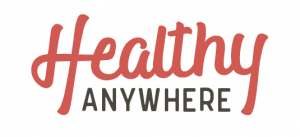
What’s in your food? Warning: You may not want to know! But you sure have a right to know.
Learn what’s listed – and NOT – on labels, and how to avoid hidden hazards.
We’re launching a series on hidden toxics and chemicals in our food supply.
First up are toxics found in (non-Organic) packaged and processed foods.
Most of us know or have heard that ‘processed foods are bad’. But a 2019 study from the Environmental Working Group shed new light as to why they are bad. The report cited well over 2,000 synthetic chemicals in non-organic packaged foods.1
Yup. As if it weren’t enough already that the nutrition has been processed out of the food, they gotta put a little something ‘extra’ in there.
Where are these chemicals coming from, you may ask? In short, they are largely at the discretion of the manufacturers. The inmates are running the asylum, thanks to a loophole with the FDA.
The FDA GRAS (“Generally recognized as safe”) system has a longstanding loophole that allows food manufacturers to add new chemicals that they themselves deem to be safe. In recent years many scientists, organizations (American Academy of Pediatrics, Center for Food Safety, Environmental Defense Fund, etc), and even the Government Accountability Office (GAO) have questioned the lax policy and argued the FDA can’t keep up with the dizzying array of new chemical developments.
The FDA’s deputy commissioner for food admitted as much to the Washington Post in 2014 when he affirmed: “We simply do not have the information to vouch for the safety of many of these chemicals.” The same article cited the explosive growth of food additives over recent decades (from around 800 to well over 9,000. And that was in 2014). Of further interest, the article mentioned Americans were getting more than “half their daily meals from processed foods”.2 Yikes.
Scuffles over coloring agents and artificial flavors are common.
Scientists previously found concerning levels of 4MEI, a potentially carcinogenic by-product of “caramel color”, in soft drinks. Yet the official data may have been obscured, and the public left largely in the dark as to any concerns.3 (Caramel color is also used in commercial maple syrups.) Studies also confirmed carcinogenic properties of a widely-used artificial flavor, methyl eugenol4, used in baked goods, jams and jellies, candies, sodas, and more. The ‘scuffle’ is usually over the ‘safe’ level of ingestion for each chemical. One soda maker skirted the 4MEI issue by claiming most individuals would consume less than 1/3 of a 12oz can per day. (under 1/3rd of a can was within ‘acceptable’ levels).
The public is largely undereducated about such health risks and more, like endocrine disruption and neurotoxicity, from undisclosed chemicals.
When you see “flavor” on a label, the individual synthetic flavor could have many as 100 undisclosed chemicals behind it1. It’s synonymous with the beauty industry’s “fragrance”, an ingredient that can represent a mix of any number of over 3,000 chemicals5. One common thread: many other countries (like the E.U., Japan, and Australia) tend to ban these substances before the U.S.
“Isolate” is another loaded term you find on labels, even at health food stores. You’ll see soy protein isolate, whey isolate, pea protein isolate, etc. What you may perceive to be ‘health food’ is actually the result of a chemically-intense process involving multiple rounds of hexane to strip out these substances from the ’natural’ product. Hexane is ‘evaporated off’ at the end, yet residues remain. Hexane is a known neurotoxin and energy-intense petroleum product. Funny to see such usage in our “health foods”. Refined oils go through a similar hexane process. You can read more about healthy oils vs refined oils in our article and FAQs HERE.
Further still, scientists report there are ingredients that aren’t represented at all on labels. These ‘secondary ingredients’ include processing aids and food contact substances. I.E. these are chemicals used with food processing and packaging – and none have to be disclosed or listed on a label.
One example processing agent is carbon monoxide, used to extend the shelf life and ‘appearance of freshness’ for meats and fish. Carbon monoxide is banned in many countries, but the U.S. allows it – no labeling required6.
You’ve likely seen “non-BPA” packaging which is great, as “BPA” has traditionally been a hidden ‘food contact substance’ ingredient. (So, if it isn’t “non-BPA” it likely uses BPA, baby bottles aside. Also, some scientists are wary of the still-phenolic plastic replacements used to replace BPA). Another food contact substance is Perchlorate, an anti-static compound used in dry goods packaging. Perchlorate is a known endocrine disruptor and specifically can impair thyroid function7. It’s literally a drug used for people with hyperthyroidism, and can be very dangerous for children and infants who are still developing.
One saving grace in all of this: U.S. Organic standards strictly prohibit the use of synthetic chemicals – less than 40 may be used in USDA Organic packaged products. That’s a far cry from the 2,000+ chemicals allowed in conventional products.
Lesson learned: If you must buy processed or packaged foods, buy foods with the USDA Organic label. DO avoid anything that is highly-processed and opt for whole, real food as much as possible! Avoiding most all processed foods will go a long way in limiting unwarranted personal exposure.
REFERENCES
- Undurraga, D., Leiba, N., Benesh, M., et al. (2019, March). Organic: The Original Clean Food. In Packaged Foods, ‘Organic’ Not Only Bans Toxic Pesticides but Thousands of Added Chemicals. Retrieved from EWG URL
- Kindy, K. (2014, August). Food additives on the rise as FDA scrutiny wanes. Retrieved from Washington Post URL
- Consumer Reports Press Release (2014, January). Consumer Reports tests show consumers unnecessarily exposed to potential cancer risk in many soft drinks. Retrieved from Consumer Reports URL
- Johnson, J.D., Ryan, J.D., Toft, S.W, et al. J. Agric. Food Chem.2000, 48, 8, 3620-3632. “Two-Year Toxicity and Carcinogenicity Study of Methyleugenol in F344/N Rats and B6C3F1 Mice”. Retrieved from URL
- Frack, L., Sutton, B. (2010, February). 3,163 ingredients hide behind the word “fragrance”. Retrieved from EWG URL
- Djenane, D.,Roncales, P. (2018, January). Foods 2018, 7(2), 12; “Carbon Monoxide in Meat and Fish Packaging: Advantages and Limits” Retrieved from doi: 10.3390/foods7020012
- EPA “Technical Fact Sheet – Perchlorate” Retrieved from EPA URL
Healthy Anywhere helps executive travelers enjoy delicious, organic foods, and stay healthy, anywhere in the U.S. Our healthy concierge services include: travel nutrition and meal planning, food delivery, fitness support, and accountability. If you or someone you know would appreciate this level of support, get in touch to work with us.
Eat Clean + Breathe Deep + Move Often = Never Settle™


Pingback: Safer and clean: Organic candy for Halloween - Healthy Anywhere